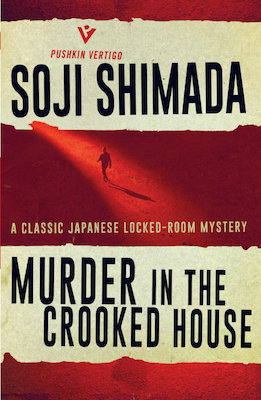
In the village of Hauterives in the south of France, there’s a curious building known as Cheval’s Palais Idéal. For thirty-three years, a humble postman by the name of Ferdinand Cheval laboured completely alone to create his dream palace, finally completing his task in 1912.
The structure is part Arabian palace, part Hindu temple; its entrance is like the gateway to a medieval European castle, with a Swiss-style shepherd’s hut sitting next to it. The whole effect lacks unity, but there is no doubt that this is a perfect rendition of a child’s fantasy castle. Here in Tokyo people worry too much about style, economy, or how they will be judged by others, and that is how they end up with characterless rows of rabbit hutches crammed in together.
Cheval was barely literate. The notes he left behind were full of spelling mistakes. But they were also alight with his burning belief that it was his life’s mission to build this unique place of worship.
According to these notes, he embarked on his project while delivering the mail. He began by picking up any interesting or unusually shaped rocks or pebbles he found while out on his rounds, and putting them in his pockets. He was already forty-three years old at this point. After a while, along with his postbag he began to carry a large basket over his shoulder for the rocks. And then it wasn’t long before he was taking a wheelbarrow out on his rounds.
One can only imagine how this eccentric postman was treated in his dull country village. Every day he took his collection of rocks and worked on building the foundation for his palace.
Twenty-six metres long, fourteen metres wide and twelve metres high—the construction of the palace building itself took three years. And then, slowly and steadily, all kinds of cement statues were added to its walls: cranes, leopards, ostriches, elephants, crocodiles. They would eventually cover all the surfaces of the building. Next, Cheval made a waterfall and three giant statues for the front wall.
He was seventy-six when he finally completed his great oeuvre. He enshrined his number one assistant—his trusty wheelbarrow—in the place of honour inside the palace, and built himself a modest house by the front entrance. After retiring from his job at the post office, he took up residence in the house with its excellent view of his palace. Apparently he had never intended the palace to be lived in.
In photos of Cheval’s palace, the materials used to construct it seem to have the soft texture of rubber. The ornamental statues that adorn its whole surface are more intricate than those of Angkor Wat, but the overall form and appearance of the walls are not fixed or uniform. There seems to be no order or balance—everything seems to be in a kind of warped confusion. If you weren’t interested in this kind of thing, you might just see the work of art to which Cheval dedicated the latter half of his life as a worthless antique or maybe even the
equivalent of a pile of scrap metal.
It was easy for his fellow villagers to call Cheval a madman, but there was a clear commonality between the concept behind his palace and the work of the celebrated Spanish architect Antonio Gaudí. Cheval’s Palais Idéal is to this day the only tourist attraction in the otherwise unremarkable village of Hauterives.
***
If we’re talking oddballs with a mania for architecture, then there is one character who cannot be ignored: King Ludwig II of Bavaria. He is also famous for being the patron of the composer Richard Wagner. His two lifelong passions seem to have been the reverence he had for Wagner, and the construction of his castles.
The Linderhof Palace was one of his architectural masterpieces. Many complained that it was a blatant rip-off of the style of the French House of Bourbon, but after pushing open the revolving stone door in the hill behind the castle and entering the high-roofed tunnel, you realize that the space you find yourself in is one of a kind.
His two lifelong passions seem to have been the reverence he had for Wagner, and the construction of his castles.The tunnel leads into a magnificent man-made cave with a wide, dark lake. In the middle of the lake sits a boat fashioned in the shape of a pearl oyster. The multicoloured lighting flickers, and at the water’s edge there is a table made from branches of imitation coral. The cave walls are painted with fantastic scenes of angels and cherubs. There is no human being who wouldn’t look at this scene and find their imagination piqued.
It is said that when his beloved Wagner passed away, King Ludwig II buried himself away in this gloomy underground burrow, and took all his meals at that fake coral table while reminiscing about his dear friend.
***
In the West, there are all kinds of buildings with surprises built in: sliding walls, secret tunnels, hidden passageways. By comparison, Japan has relatively few.
There are a few ninja houses with their secret entrances and exits, but everything in those is designed with a practical purpose.
But there is one, the Nijotei, a strange residence built in Fukagawa in Tokyo after the Great Kanto Earthquake. It seems to have been fairly well known. There were ladders that went right up to the ceiling, glass peepholes in the doors, a pentagon-shaped window in the entrance way.
Maybe the equivalent of Cheval’s Palais Idéal exists somewhere in Japan, but I’ve never heard of one. There is, however, one place I ought to tell you about—the Crooked House in Hokkaido.
***
At the top of Japan’s northernmost island, Hokkaido, on the very tip of Cape Soya, there’s a high plain that overlooks the Okhotsk Sea. On this plain stands a peculiar-looking structure known by the locals as “The Crooked House”.
It looks somewhat Elizabethan with its three-storey main building complete with pillars and white-painted walls. To the east of this is a cylindrical tower the spitting image of the Leaning Tower of Pisa.
The major difference between this tower and the one in Pisa is that all its surfaces are made from glass. And on this glass is a thin layer of aluminium, deposited by vacuum, or what is known as aluminium mirror-coating. Consequently, when the sun shines, everything that surrounds this tower is reflected in this glass cylinder.
On the edge of the high plain is a hill. Viewed from the summit of this hill, the giant cylindrical glass… or perhaps I should say mirror… anyway, this glass tower and Western-style house look like some kind of fairy-tale castle.
There’s not another house in any direction as far as the eye can see. Nothing but a vast plain of grass the colour of dead leaves, stirred up by the wind. The nearest settlement is a small village situated way past the mansion and down the slope from the plain, at least ten minutes by foot.
When the sun goes down, the north wind roars across the plain, and the glass tower turns golden in the sunset. Behind it stretches the northern sea.
In front of this sea, the gold-tinted glass tower looks as solemn and imposing as any place of religious worship.Here, the cold north sea is a deep shade of indigo blue. If you were to run down the hill and dip your hand into its water, you’d expect to see your fingers emerge blue with dye. In front of this sea, the gold-tinted glass tower looks as solemn and imposing as any place of religious worship.
Just in front of the main, Western-style house is a large stone patio, dotted with sculptures, a small pond and a flight of stone steps. At the base of the tower is what appears to be a flower bed in the shape of a fan. I say “what appears to be” because it is quite overgrown, and clearly hasn’t been tended for a long while.
Neither the main house nor the tower is currently occupied. It’s been for sale for many years, but it will probably stay that way. It’s less the fault of the remote location; it’s far more likely the murder that keeps buyers away. This particular murder case was a very mysterious one. It caused quite a stir among the crime buffs and murder enthusiasts of the day. So for all of you who have not yet heard it, I am going to tell you the tale of “Murder in the Crooked House”. I believe I’ve done all that’s necessary to set the scene for this strange mystery. The setting is of course a bleak, wintry plain, and that crooked house.
***
The history of the main building and tower that make up the Crooked House is rather less like that of Cheval’s palace, and a lot closer to Ludwig’s castle, in the sense that the man who built them was a kind of modern-day king—a millionaire with both fortune and influence. His name was Kozaburo Hamamoto, and he was the president of Hama Diesel Corporation. But unlike either Cheval or Ludwig, he didn’t have any crazy tendencies. He was simply a man of very particular tastes, and having money, he was able to indulge those tastes.
The boredom or the depression that plagued such a man who had reached the peak of his career might have been what turned him into something of a recluse. In a familiar story that we might hear from any corner of the world, it seemed that all the gold he had amassed weighed heavily on his mind.
There was nothing really unusual about the structure of the house and the tower. The interior resembled a maze in some ways, but it was nothing too complicated, and once you got your bearings it wasn’t likely that you would get lost more than a couple of times at most. There were no revolving wall panels, underground caves or descending ceilings. The feature that caught the attention was exactly what gave it its local nickname: that from the very beginning it had been built crooked, or rather, leaning at an angle. Thus the glass tower was literally a “Leaning Tower”.
The main house leans at an angle of about five or six degrees off the vertical, not really enough to be obvious from the outside. On the other hand, the inside is quite bewildering.
The building leans towards the south. The windows on the north and south sides are the perfectly normal kind that you’d find in any house, but the ones on the east and west sides are problematic. On these walls, the windows and their frames have been constructed to run parallel with the ground outside. Once your vision adjusts to the strange appearance of the rooms, you feel like a hard-boiled egg that has been dropped on the floor and is trying to roll uphill. It’s a feeling that’s difficult to imagine without having stayed at the mansion. The longer you stay, the more confused your mind becomes.
The lord of the manor, Kozaburo Hamamoto, was reputed to have had a lot of fun at his guests’ expense, watching them try to navigate his twisted home. Quite an expensive way to get some childish laughs.
I think that should be enough information for you to get an idea of the man behind the mansion and to set the scene for this tale.
__________________________________


